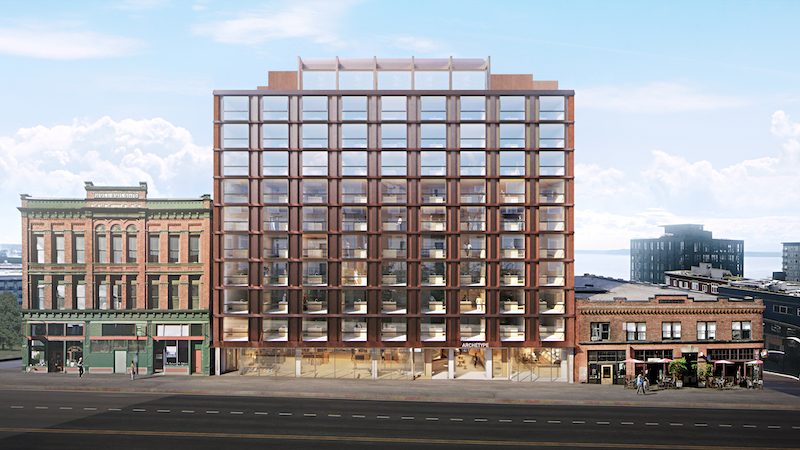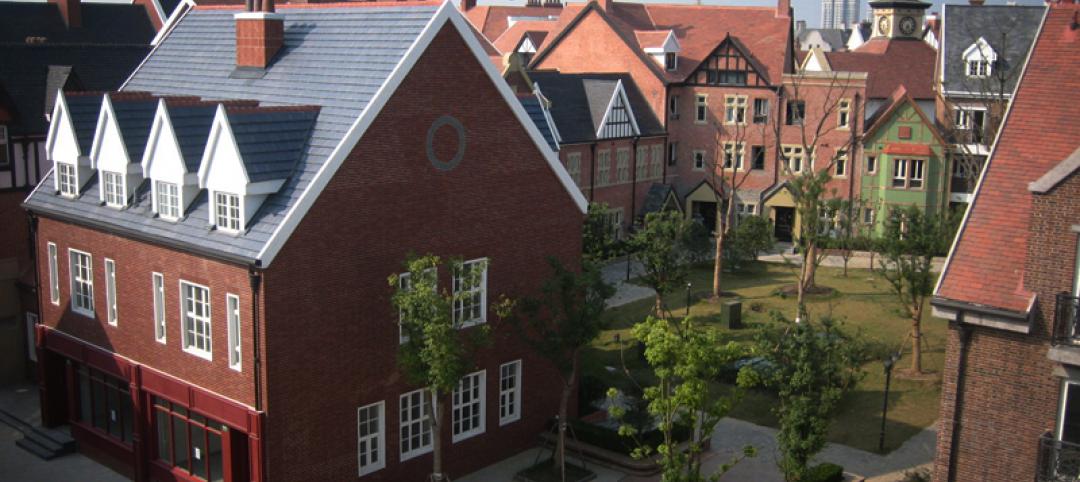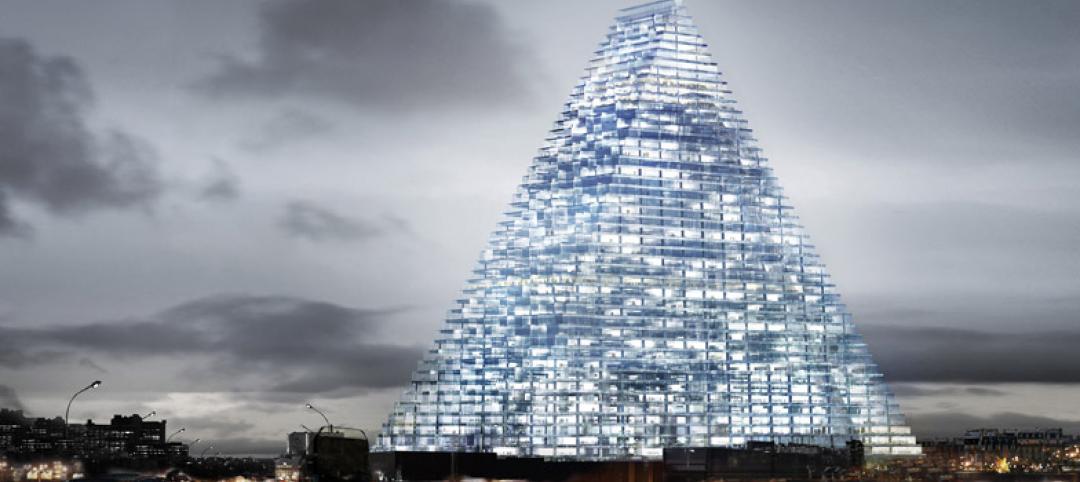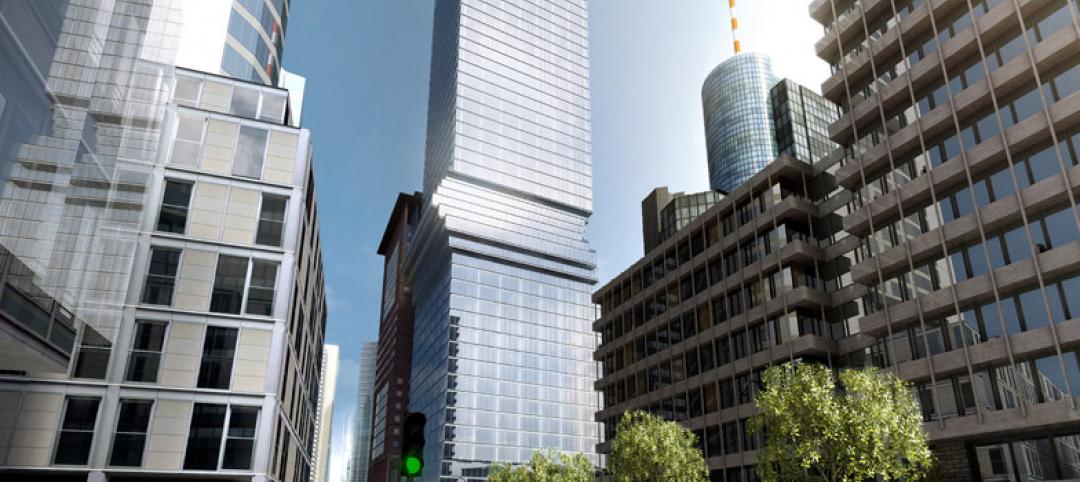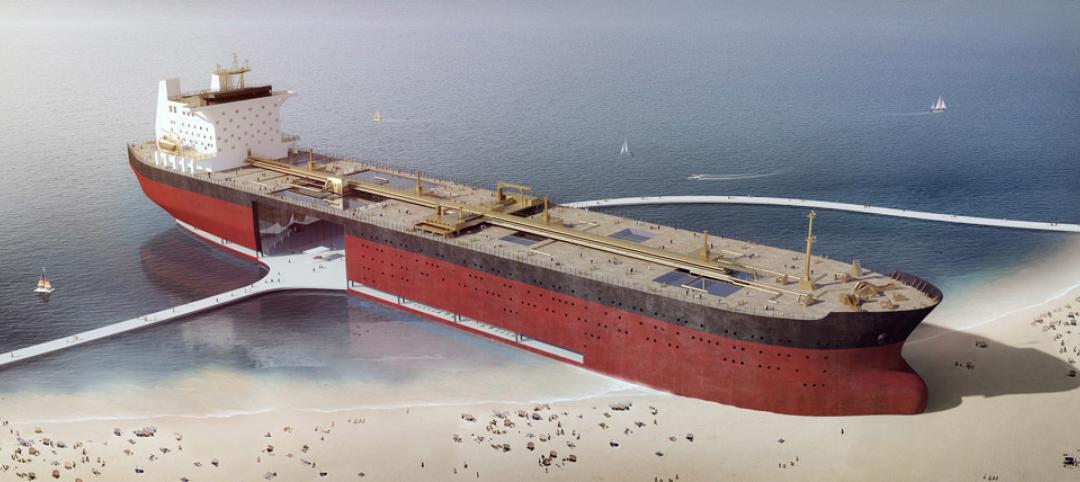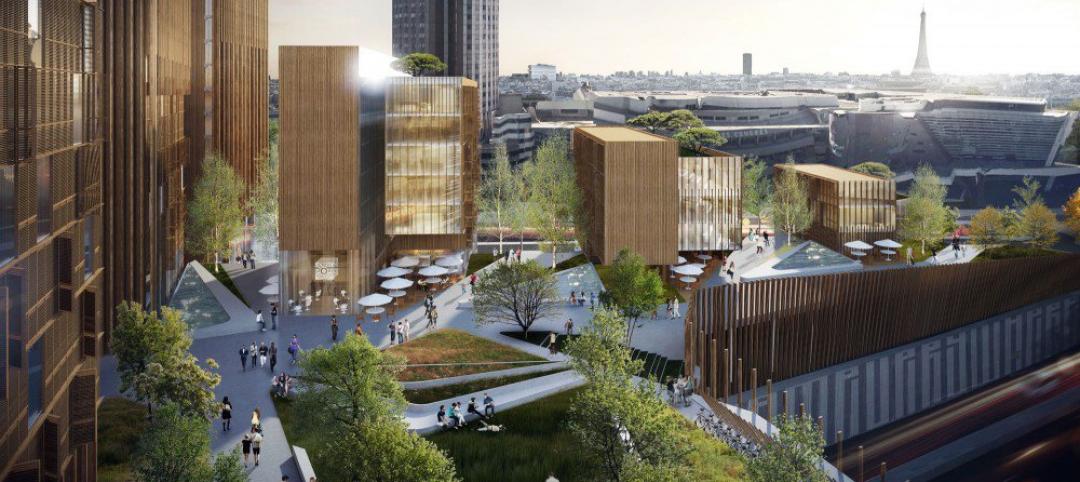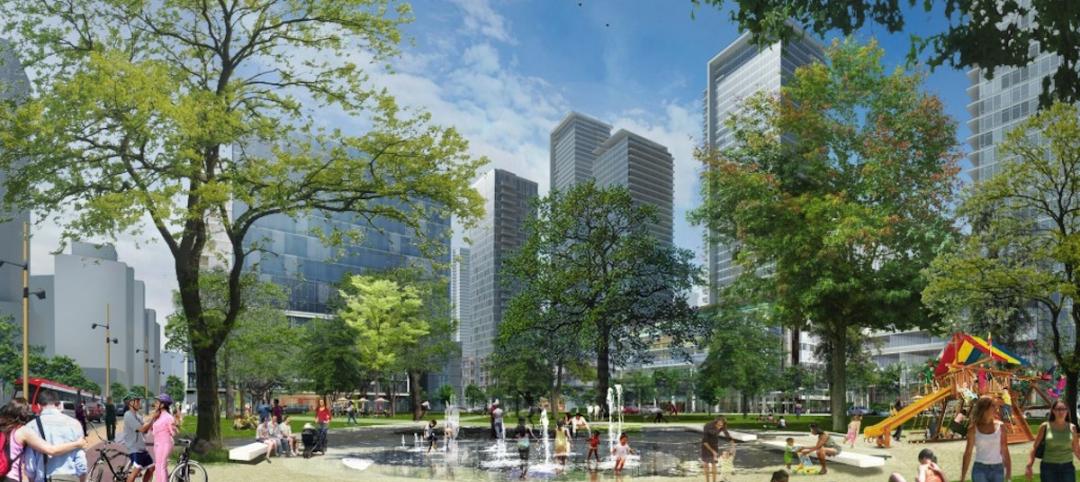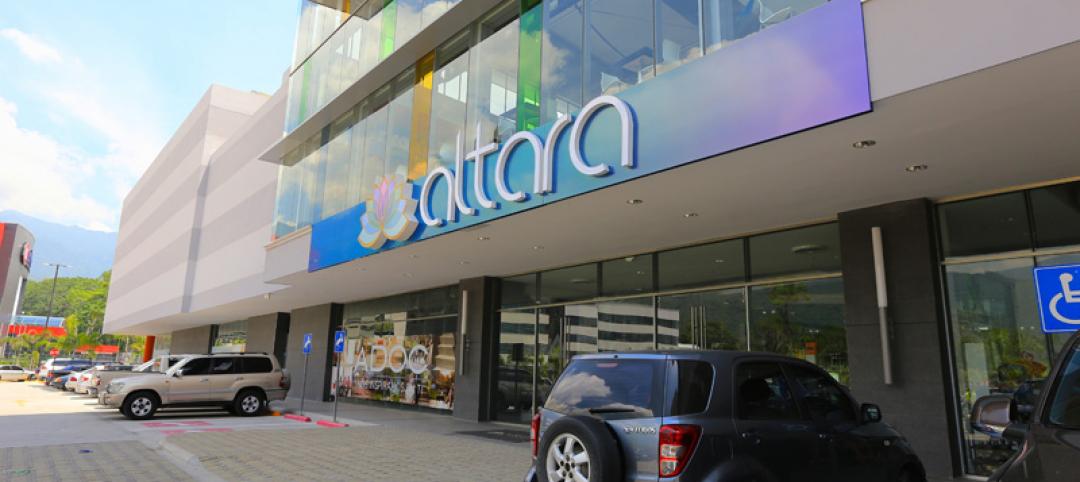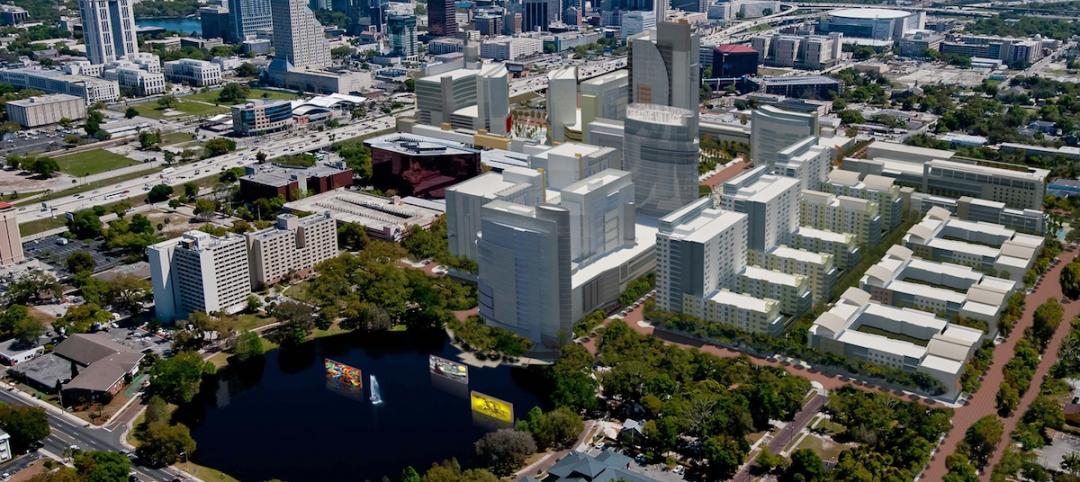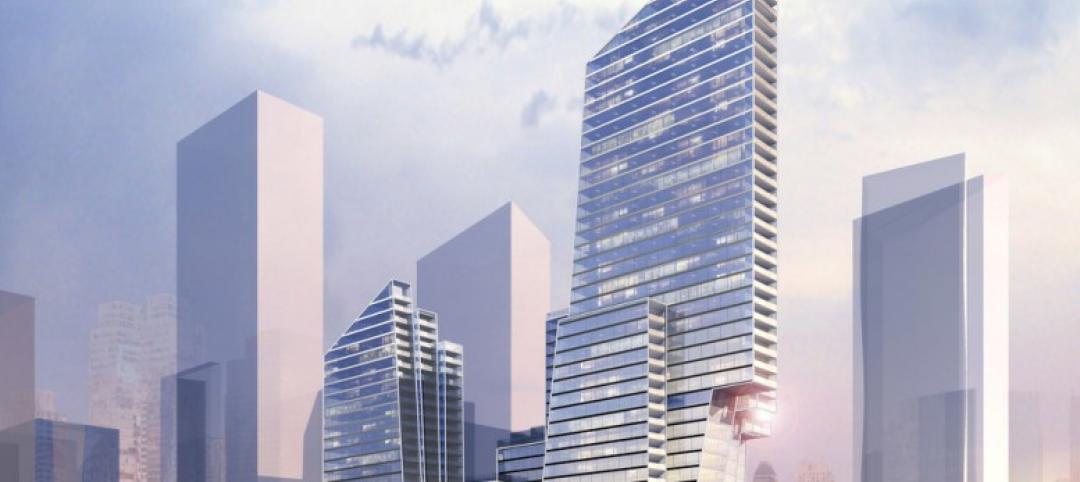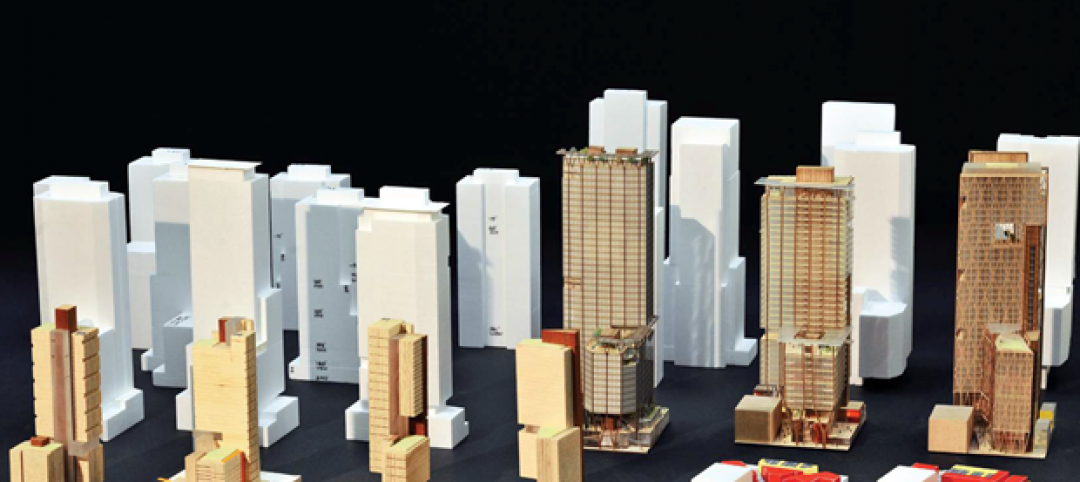Sometime in mid to late 2022, construction is scheduled to start on Archetype, an 11-story mixed-use development that, upon completion in 2024, will be wedged between the historic Hull and Glaser buildings on 1st Avenue in Seattle’s Belltown, that city’s most densely populated neighborhood, which has transformed from what was once a low-rent warehouse district to a walkable community with galleries, restaurants, shops, residential towers and lofts, schools and colleges that include the Art Institute of Seattle.
Seattle-based HEWITT is the Executive Architect on the Archetype project for the developer Burrard Properties, which also brought on board Basel, Switzerland-based Herzog & de Meuron as Design Consultant. The latter firm’s expertise includes respecting legacy buildings and their historical context while transforming spaces into something new. This is Herzog & De Meuron’s first project in Seattle.
“Herzog & de Meuron’s expertise in creating iconic buildings, coupled with our intimate knowledge and lived experience in Seattle, creates a team strategically positioned to champion good design in the heart of our city,” says Julia Nagele, Principal and Director of Design at HEWITT.
Today, the developer released design details about Archetype, as well as renderings.
AN ACTIVE STREETFRONT, AND BAY VIEWS
The building, on a 13,230-sf square lot, is located at a pivotal juncture where the northern entrance to the new Seattle waterfront intersects with Belltown.
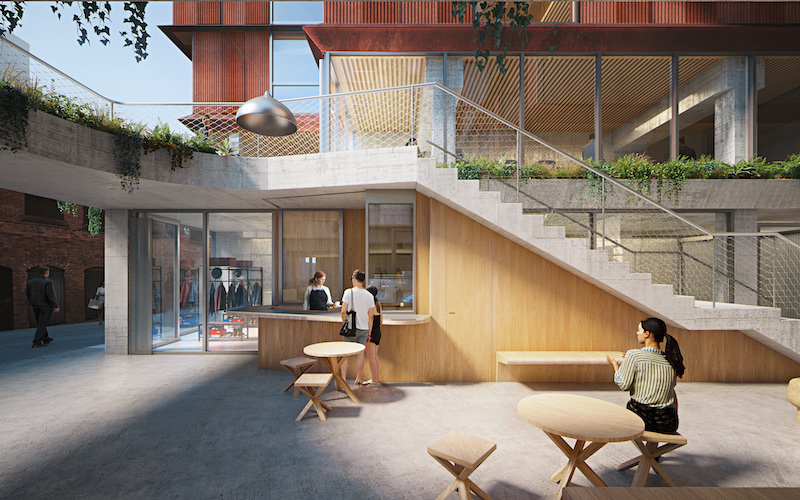
An active streetfront is the entry point to a semi-private laneway that connects Archetype to its alley and 1st Avenue.
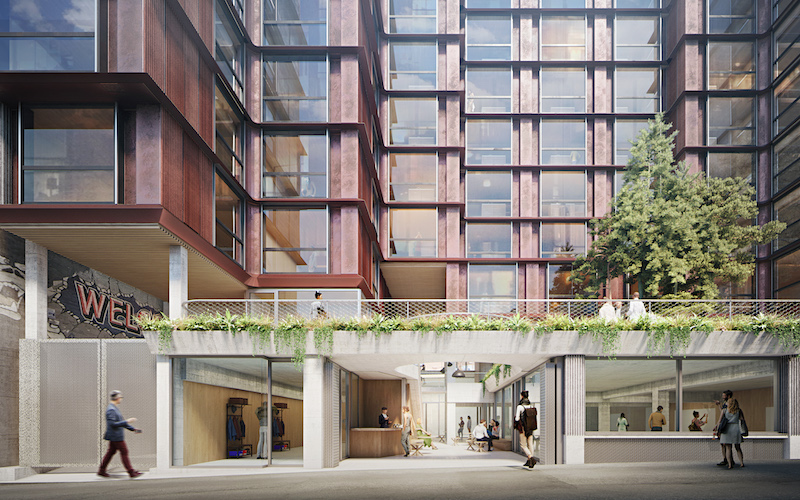
Two curved showcases, or vitrines, will provide a continuous active street front and mark the entry point of a semi-private laneway heading to the building’s rear alley. (Alleys have cultural and historic significance in Seattle, and this project presents an opportunity to connect the alley with 1st Avenue.) This is where Archetype opens toward Elliott Bay via its crescent shape that creates a courtyard surrounded by residential units with views of the bay and beyond.
Fostering a relationship with the street and neighborhood was an important project priority for the design team. Street level retail, food and beverage outlets are fronted by a low barrier, high transparency façade that alludes to classical architectural forms and maximizes natural light and air through an expansive window system. Metal and mineral cladding are meant to recall Belltown’s warehouse and semi-industrial roots.
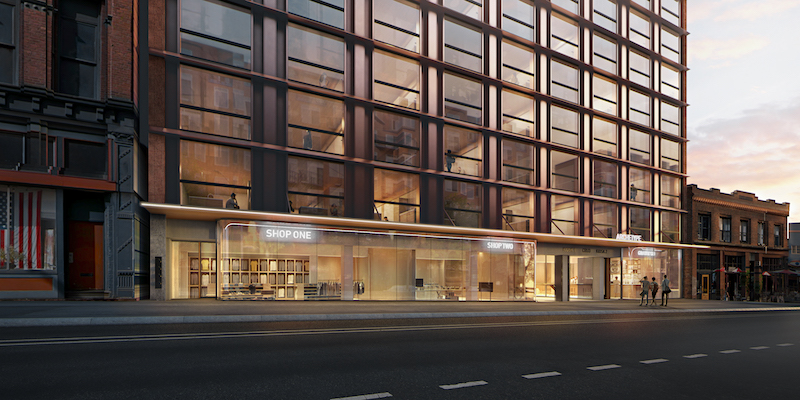
The designers proposed 7,500 sf of commercial space as part of Archetype.
The developer did not release information about this project’s cost. BD&C confirmed that there will be “up to” 180 apartments in the building, and that Swinerton is serving in a construction management capacity. An “early design guidance” document that the designers submitted to Seattle’s Downtown Design Review Board last September proposed that Archetype would be 95 ft tall, have between one and three stories of below-grade parking with 30-50 parking stalls and 165 bicycle parking spaces, a rooftop amenity of between 5,000 and 10,000 sf, and about 7,500 sf of street-level commercial.
Related Stories
Mixed-Use | Jul 22, 2015
Despite China's 'ghost cities,' the country continues construction boom
Cities continue to spring up in the heart of China. Designed to accommodate millions, many are still nearly empty.
High-rise Construction | Jul 13, 2015
Herzog & de Meuron’s triangle tower stirs controversy in Paris
The 590-foot glass pyramid building will include a 120-room hotel, 754,000 sf of office space, and cultural facilities.
High-rise Construction | Jul 7, 2015
Bjarke Ingels designs Frankfurt skyscraper with a surprise in the middle
Several levels in the center of the 185-meter tower are shifted outward to allow for terraces with city views.
Cultural Facilities | Jun 10, 2015
Artists turn oil tankers into architecture
Four Dutch artists propose transforming tankers into monuments with mixed-use space.
Wood | Jun 2, 2015
Michael Green Architecture designs world's tallest wood building for Paris competition
“Just as Gustave Eiffel shattered our conception of what was possible a century and a half ago, this project can push the envelope of wood innovation with France in the forefront," said architect Michael Green of the project.
Smart Buildings | May 28, 2015
4 ways cold-climate cities can make the most of their waterfronts
Though cold-climate cities pose a unique challenge for waterfront development, with effective planning waterfront cities with freezing winter months can still take advantage of the spaces year-round.
Sponsored | Coatings | May 14, 2015
Prismatic coatings accent the new Altara Center
This multi-use campus will contain a university, sports facilities, medical center, and world-class shopping
Mixed-Use | May 10, 2015
Construction on Orlando’s massive ‘innovation hub’ is finally starting
The $1 billion Creative Village development will create a business and education hub.
High-rise Construction | May 6, 2015
Two new designs submitted for New York City Riverside Center
Both designs reference the cantilevers and other elements featured in architect Christian de Portzamparc’s original masterplan for the complex, which has now been scrapped.
Building Owners | May 6, 2015
Hackathons and RFCs: Why one developer killed the RFP
In lieu of an RFP process, Skanska Commercial Development hosted a three-week "hackathon" to find an architect for its 2&U tower in Seattle.


